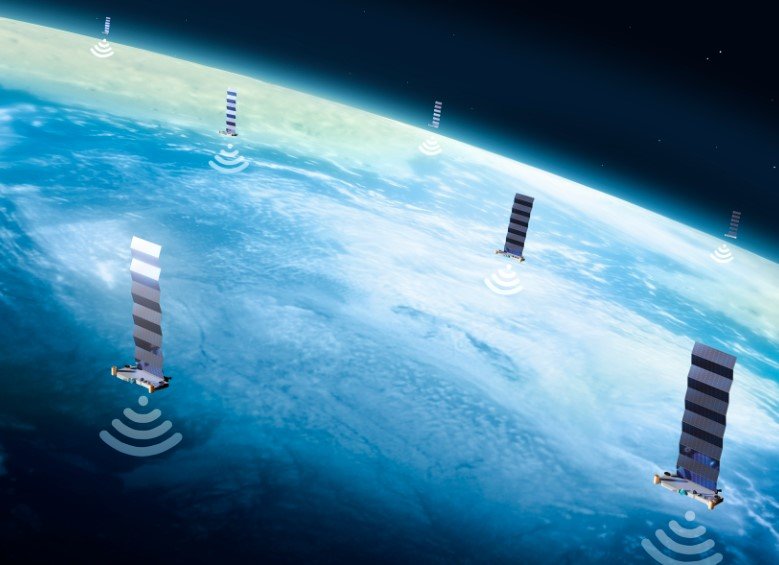In the midst of ongoing Russian attacks on Ukrainian cities, satellite giant Intelsat has stepped up to provide critical internet access through portable terminals. Partnering with Help.NGO, the company rushed in equipment to keep people connected during blackouts and bombings, helping families, aid workers, and officials stay online in 2025.
This effort comes as Ukraine faces repeated strikes on its infrastructure, cutting off power and communications. Intelsat’s quick action has created safe spots for internet use, saving lives by enabling emergency calls, news updates, and coordination of relief.
The Urgent Need for Satellite Connectivity
Ukraine’s war with Russia has destroyed much of the country’s ground-based internet networks. Missiles have targeted power grids and cell towers, leaving millions without ways to communicate.
Intelsat saw the crisis unfold and moved fast. They teamed up with Help.NGO to deploy satellite terminals that beam broadband from space. These devices work even when local systems fail.
Help.NGO teams set up hotspots in public areas like town squares, often under threat of attack. This setup lets displaced people reach loved ones and get vital information.
The partnership started early in the conflict but ramped up in 2025 as attacks intensified. Intelsat’s CEO highlighted the mission’s role in global humanitarian efforts.
How Intelsat and Help.NGO Make It Happen
Intelsat provides the satellite backbone, a vast network of orbiting spacecraft that covers the globe. Help.NGO handles the ground work, installing terminals in hard-hit areas.
These terminals are portable and easy to set up. They connect to Intelsat’s satellites, offering high-speed internet without relying on damaged cables or towers.
In interviews, Help.NGO leaders described racing to bombed-out zones to establish connections. They linked up schools, hospitals, and shelters, ensuring aid flows smoothly.
Intelsat’s technology integrates with local networks for seamless access. This hybrid approach boosts reliability in war zones.

One key feature is the rapid deployment. Teams can activate a hotspot in hours, a game-changer during emergencies.
- Portable Design: Terminals fit in backpacks, making them ideal for mobile teams.
- Weather Resistance: They work in rain, snow, or dust from explosions.
- Secure Links: Encryption protects data from cyber threats.
Impact on Civilians and Aid Efforts
The internet access has transformed daily life for many Ukrainians. Families use it to check on relatives, while doctors coordinate medical supplies.
In 2025, with over 10 million people displaced, these connections help track missing persons and organize evacuations. Aid groups report faster response times thanks to real-time updates.
Local officials use the terminals for emergency broadcasts, warning about incoming strikes. This has likely saved countless lives.
Help.NGO estimates thousands have benefited directly. In one city, a hotspot kept a hospital online during a blackout, allowing surgeries to continue.
The effort also supports education. Children in shelters access online classes, maintaining some normalcy.
| Location | Terminals Deployed | People Served | Key Benefits |
|---|---|---|---|
| Kyiv Region | 150 | 50,000 | Emergency alerts, family contacts |
| Eastern Frontlines | 200 | 75,000 | Aid coordination, medical teleconsults |
| Southern Cities | 100 | 30,000 | Education access, news updates |
Challenges from Starlink Issues and Alternatives
While Intelsat fills gaps, Ukraine has faced hurdles with other providers like Starlink. Recent outages and restrictions in 2025 disrupted military communications, prompting a search for backups.
European firms like Eutelsat stepped in, discussing more terminals amid concerns over Starlink’s reliability. Ukraine even plans its own national satellite system to reduce dependence.
Intelsat’s multi-orbit solutions stand out, combining different satellite types for better coverage. This approach avoids single points of failure.
Cyber attacks from Russia add risks, but Intelsat’s secure systems have held up. The company continues to innovate, testing new terminals for 2025 hurricane seasons that could adapt to war zones.
Looking Ahead to Broader Support
Intelsat aims to expand its reach in Ukraine and beyond. With the war dragging into its fourth year, reliable connectivity remains crucial.
The company invests in next-gen satellites for faster speeds and wider coverage. Partnerships like this one with Help.NGO set a model for future crises.
Ukraine’s government prioritizes building its own comms network, but international help like Intelsat’s bridges the gap.
Experts predict more collaborations as global conflicts rise. Intelsat’s work shows how tech can aid humanity in tough times.
What do you think about these efforts? Share your thoughts in the comments and spread the word to raise awareness.








